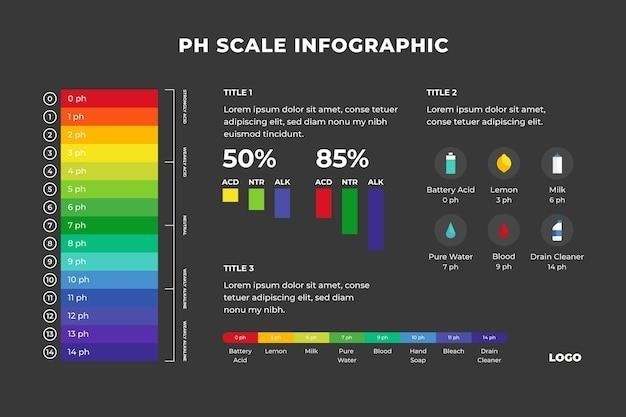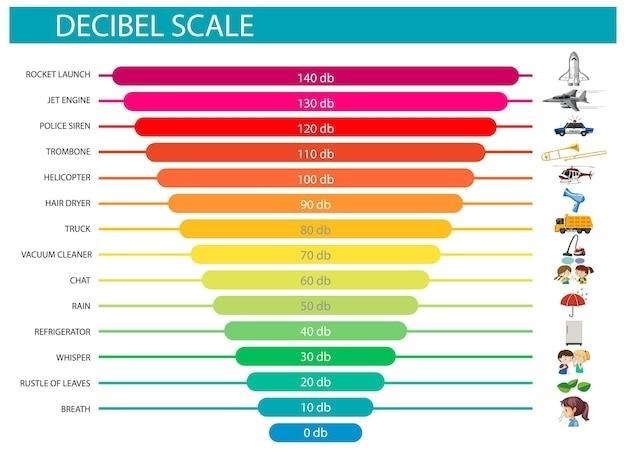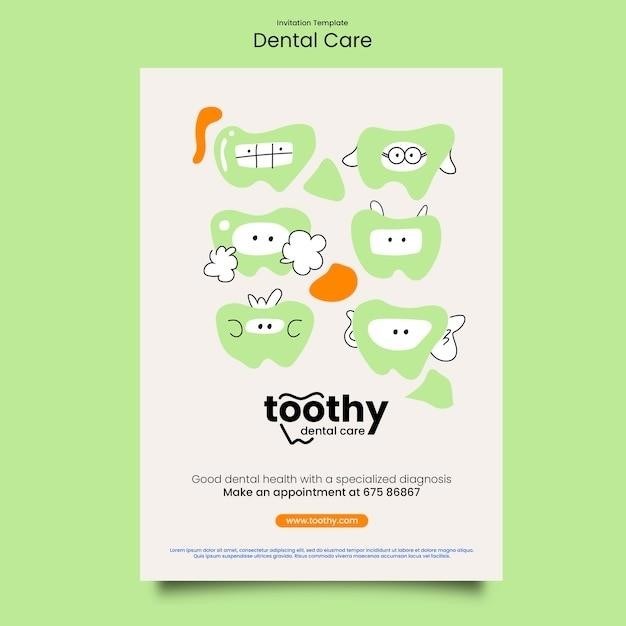The Mohs Hardness Scale⁚ A Guide to Mineral Hardness
The Mohs Hardness Scale is a simple, relative measure of mineral hardness developed by German mineralogist Friedrich Mohs in 1812. This scale ranks ten minerals from 1 (softest) to 10 (hardest), based on their ability to scratch one another. The Mohs scale is a valuable tool for identifying minerals and gemstones, as well as for understanding the relative durability of various materials.
Introduction
The Mohs Hardness Scale is a fundamental concept in mineralogy and geology, providing a simple yet effective way to assess the relative hardness of minerals. It is a relative scale, meaning it compares the resistance of one mineral to being scratched by another, rather than providing an absolute measurement of hardness. This scale is widely used in various fields, including geology, gemmology, and materials science, for identifying minerals, understanding their properties, and evaluating their suitability for different applications.
The Mohs Hardness Scale is a valuable tool for anyone interested in minerals, gemstones, or materials science. It is a simple concept that can be easily understood and applied, making it accessible to both professionals and hobbyists. This guide will delve into the history, principles, and applications of the Mohs Hardness Scale, providing a comprehensive understanding of this essential tool in the world of minerals and materials.
What is the Mohs Hardness Scale?
The Mohs Hardness Scale is a relative scale that ranks ten minerals from 1 (softest) to 10 (hardest) based on their ability to scratch each other. Developed by the German mineralogist Friedrich Mohs in 1812, it is a simple and practical tool used to identify and classify minerals. The scale does not provide absolute hardness values but rather a comparative ranking. For instance, a mineral with a Mohs hardness of 6 can scratch any mineral with a hardness of 5 or lower, but it can be scratched by minerals with a hardness of 7 or higher.
The Mohs Hardness Scale is not linear. The difference in hardness between consecutive minerals is not uniform. For example, the difference in hardness between diamond (10) and corundum (9) is significantly greater than the difference between talc (1) and gypsum (2). This is due to the varying chemical bonds and crystal structures of the minerals. Despite this nonlinearity, the Mohs Hardness Scale remains a valuable tool for quickly assessing the relative hardness of minerals in the field.
History of the Mohs Hardness Scale
The Mohs Hardness Scale, a cornerstone of mineral identification, owes its existence to the pioneering work of Friedrich Mohs, a German mineralogist. In 1812, Mohs devised this relative scale, ranking ten minerals from 1 (softest) to 10 (hardest) based on their ability to scratch each other. This innovative system provided a practical and readily accessible method for classifying minerals in the field, a significant advancement for the time.
Mohs’s choice of minerals for the scale was strategic. He selected common minerals with distinct hardness levels, making it easier for others to replicate his findings. The scale’s simplicity and effectiveness have ensured its enduring relevance. The Mohs Hardness Scale remains an indispensable tool for mineralogists, gemologists, and even laypeople interested in identifying minerals. Its historical significance lies in its contribution to the field of mineralogy, providing a standardized system for characterizing mineral hardness.
How the Mohs Hardness Scale Works
The Mohs Hardness Scale is a straightforward method for determining the relative hardness of minerals. It utilizes a series of ten reference minerals, each assigned a number from 1 (softest) to 10 (hardest). The scale operates on the principle that a harder mineral can scratch a softer mineral, while a softer mineral cannot scratch a harder one.
To use the Mohs scale, you simply attempt to scratch an unknown mineral with a known mineral from the scale. If the known mineral scratches the unknown mineral, the unknown mineral is softer. If the unknown mineral scratches the known mineral, the unknown mineral is harder. By comparing the unknown mineral to several reference minerals on the scale, you can determine its approximate hardness.
It’s important to note that the Mohs Hardness Scale is a relative scale, not an absolute scale. This means that the difference in hardness between two adjacent minerals on the scale is not necessarily equal. For instance, the difference in hardness between diamond (10) and corundum (9) is significantly greater than the difference between calcite (3) and fluorite (4).
Minerals on the Mohs Hardness Scale
The Mohs Hardness Scale is defined by ten specific minerals, each representing a distinct level of hardness. These minerals, arranged from softest to hardest, are⁚
- Talc⁚ A soft, soapy mineral often used in cosmetics and as a lubricant.
- Gypsum⁚ A common mineral found in drywall and plaster, often used for making casts;
- Calcite⁚ The primary component of limestone and marble, readily scratched by a knife.
- Fluorite⁚ A colorful mineral often used in optical instruments due to its transparency.
- Apatite⁚ Found in bones and teeth, it has a hardness similar to a steel knife.
- Orthoclase⁚ A common feldspar mineral found in granite and other igneous rocks.
- Quartz⁚ A hard, durable mineral used in making glass and electronics.
- Topaz⁚ A gemstone known for its brilliance and resistance to scratching.
- Corundum⁚ A hard mineral used in abrasive materials and for making rubies and sapphires.
- Diamond⁚ The hardest known natural material, used in cutting tools and jewelry.
These ten minerals serve as reference points for determining the hardness of other minerals and materials.
Uses of the Mohs Hardness Scale
The Mohs Hardness Scale finds applications in various fields, demonstrating its versatility as a tool for understanding material properties.
- Mineral Identification⁚ The most fundamental use of the Mohs scale is in identifying minerals. By scratching a mineral against known materials on the scale, a geologist can determine its relative hardness, aiding in its classification.
- Gemstone Selection⁚ When choosing gemstones for jewelry, the Mohs scale helps assess a stone’s durability and suitability for different settings. A harder gemstone is less likely to scratch or chip, making it ideal for everyday wear.
- Material Science⁚ The Mohs scale provides a simple, relative measure of hardness for various materials. This information is crucial for selecting appropriate materials for specific applications, such as tools, coatings, and abrasives.
- Educational Tool⁚ The Mohs Hardness Scale is a valuable tool for teaching about minerals and their properties. Its simplicity allows students to easily understand the concept of hardness and apply it to real-world examples.
The Mohs Hardness Scale, despite its simplicity, plays a significant role in various fields, from geology to material science and education.
Limitations of the Mohs Hardness Scale
While the Mohs Hardness Scale is a valuable tool, it has several limitations that should be considered⁚
- Non-Linear Scale⁚ The Mohs scale is not a linear scale. The difference in hardness between minerals on the scale is not consistent. For example, the difference in hardness between diamond (10) and corundum (9) is significantly greater than the difference between talc (1) and gypsum (2).
- Relative Hardness⁚ The Mohs scale only provides a relative measure of hardness. It doesn’t quantify the actual resistance to scratching, which can vary significantly between minerals with the same Mohs hardness.
- Limited Range⁚ The Mohs scale only covers a limited range of hardness values. Many materials, especially those used in modern engineering and manufacturing, fall outside the scale’s range.
- Subjectivity⁚ Determining a mineral’s hardness on the Mohs scale can be subjective, depending on the observer’s skill and the pressure applied during the scratching test.

Despite these limitations, the Mohs Hardness Scale remains a useful tool for many applications, especially in field geology and mineral identification. However, more precise methods are often necessary for specific scientific and engineering purposes.
Alternative Hardness Tests
While the Mohs Hardness Scale is widely used, it is not the only method for measuring material hardness. More precise and quantitative hardness tests are available for specific applications, offering a wider range of measurements and greater accuracy. These include⁚
- Brinell Hardness Test⁚ This method uses a hardened steel ball to indent a material under a specific load. The size of the indentation is then used to calculate the Brinell Hardness Number (BHN), providing a quantitative measure of hardness.
- Rockwell Hardness Test⁚ This test uses a diamond indenter or a hardened steel ball to indent a material under a specific load. The depth of the indentation is then used to calculate the Rockwell Hardness Number (HR), offering a more precise measurement than the Mohs scale.
- Vickers Hardness Test⁚ This test uses a diamond indenter with a square pyramid shape to indent a material under a specific load. The size of the indentation is then used to calculate the Vickers Hardness Number (HV), providing a very accurate and widely used method for measuring hardness;
- Shore Durometer⁚ This test uses a specifically shaped indenter to measure the hardness of elastomers, rubber, and plastics. It provides a measure of the material’s resistance to indentation, offering a more specific and accurate measure for these materials.
These alternative hardness tests provide more precise and quantitative measures of hardness, making them suitable for various scientific, engineering, and industrial applications where the Mohs scale’s limitations are insufficient.
The Mohs Hardness Scale, despite its simplicity, remains a valuable tool for identifying minerals and gemstones in the field. Its ease of use and portability make it an essential instrument for geologists, mineralogists, and hobbyists alike. However, it is crucial to remember that the Mohs scale is a relative measure, and it doesn’t reflect the true hardness of materials accurately. For more precise and quantitative hardness measurements, alternative tests like Brinell, Rockwell, Vickers, and Shore Durometer are employed in various scientific, engineering, and industrial applications.
Understanding the Mohs Hardness Scale helps us appreciate the diversity and properties of minerals and gemstones, providing insights into their uses and limitations. While the Mohs scale offers a simple and practical approach to mineral hardness, it’s important to be aware of its limitations and to consider more precise methods when greater accuracy is required.



